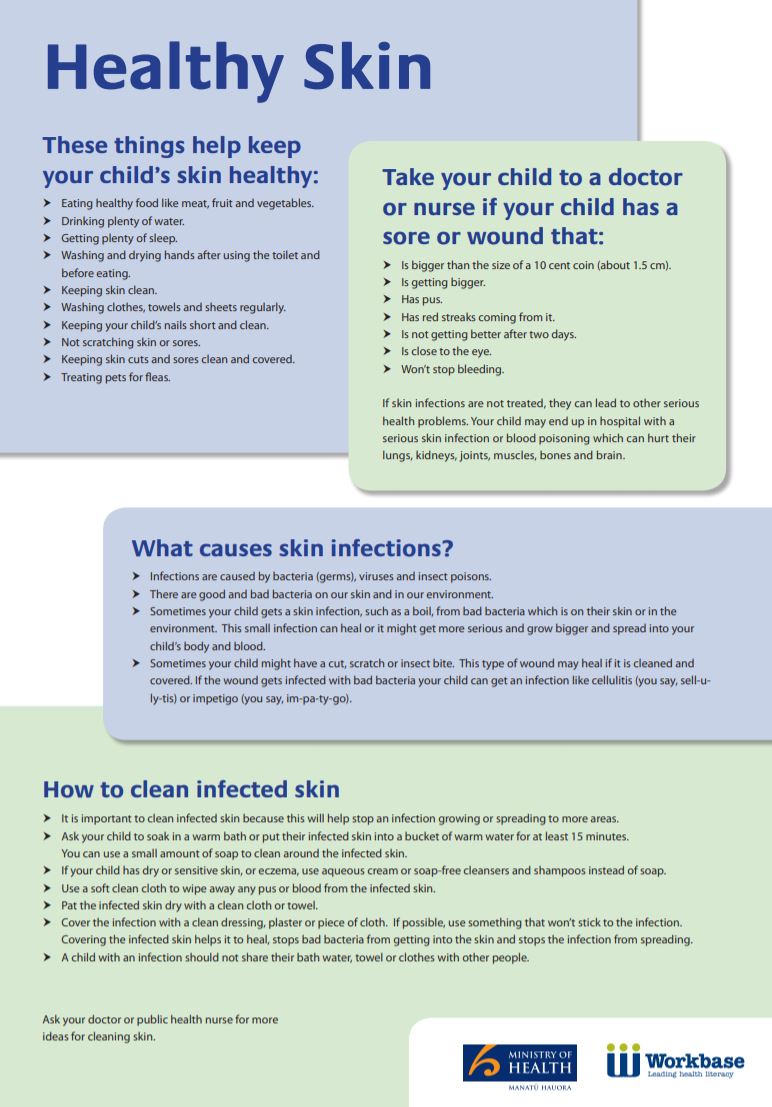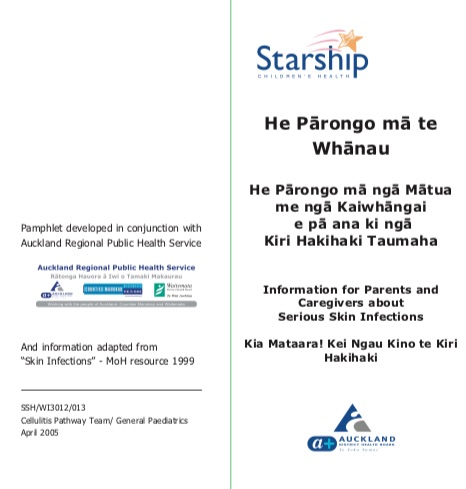As soon as you think your child might have impetigo, take them to the doctor. Treatment will depend on how severe the infection is.
For a mild infection, your doctor may prescribe an antiseptic or antibiotic cream to be applied every day. For more severe infection that is more widespread, your doctor may prescribe a course of antibiotics to be taken by mouth.
Clean off scabs and crusts
Remove the scab or crusted area by washing with an antiseptic solution such as Dettol or Savlon. Follow the instructions on the packaging or ask your pharmacist for advice on how to use them. You can also remove crusts by:
- giving your child a warm bath for 20 minutes and gently wiping crusts away with a wet towel. Wash towel after use.
- making up a mixture of half a cup of white vinegar in a litre of warm water, and applying a cloth soaked in this mix to the sores for about 10 minutes 3 times a day. Gently wipe off the crusts.
- for more severe cases, your doctor may suggest you do bleach baths(external link).
Keep the sores covered
Keep the sores clean and cover with a watertight dressing or bandage, to prevent them spreading. Dressings and the correct tapes to hold the dressing in place can be purchased from pharmacies. Throw used dressings into a plastic bag and seal it before discarding.
Try to prevent your child from scratching the sores as much as possible. Keep your child's fingernails short to prevent damage and infection from scratching. Make sure your child washes their hands with soap often especially if they touch the sores.
Antiseptic or antibiotic cream
If your child is prescribed an antiseptic or antibiotic cream, apply it to the affected areas as prescribed by your doctor – usually 2 or 3 times a day. Examples of antiseptics are povidone-iodine, hydrogen peroxide cream or chlorhexidine and antibiotic ointments are fusidic acid, or mupirocin.
- Before applying the cream or ointment, remove the crusted area as described above – see clean off scabs and crusts.
- After applying the antiseptic or antibiotic, cover the sores with a dressing, as described above – see keep the sores covered.
- Look carefully for new lesions to treat.
- Remember to wash your hands with soap and water before and after applying the cream or ointment to your child's skin.
Antibiotic liquid or capsules
If prescribed antibiotic liquid or capsules (also called oral antibiotics), continue taking the medicine for the full course, even if the sores look to have healed. Oral antibiotics can sometimes have side effects. Report any diarrhoea, stomach upsets or skin rashes to your doctor or practice nurse.
In some cases your doctor may also prescribe an ointment to rub on the inside of the nostrils for the child and other family members – the bacteria can hide out there and reinfect others.








